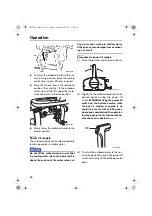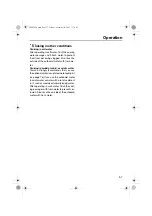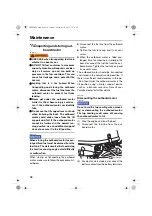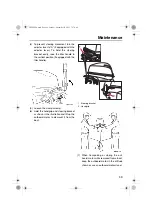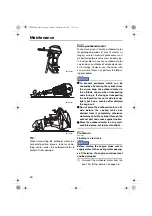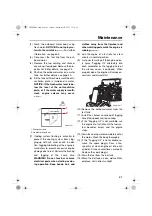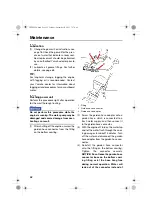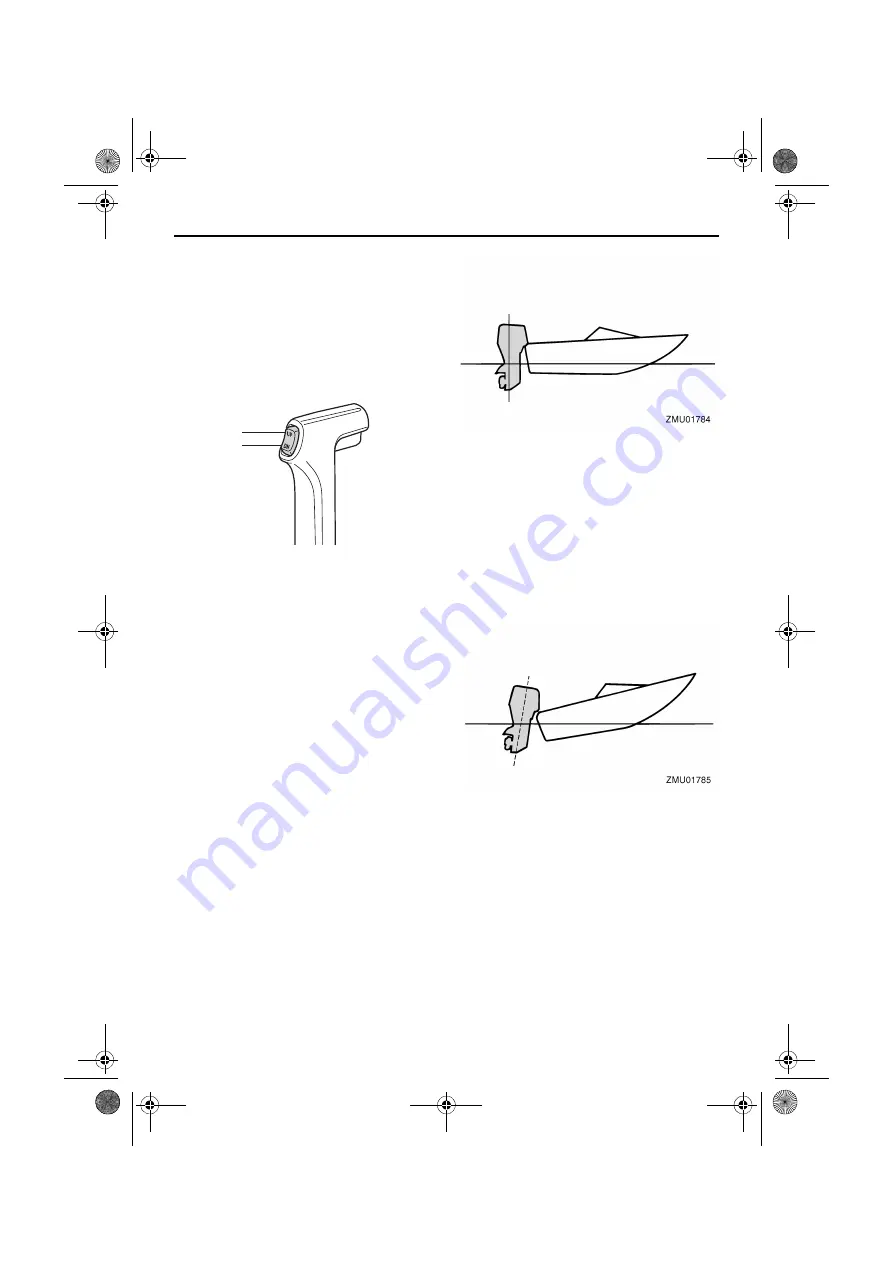
Operation
51
TIP:
While the boat is moving, it may be difficult to
adjust the trim angle due to water pressure.
Before adjusting the trim angle, reduce the
boat speed and shift into neutral.
(2) Tilt the outboard motor to the desired an-
gle using the power tilt switch.
To raise the bow (“trim-out”), tilt the outboard
motor up.
To lower the bow (“trim-in”), tilt the outboard
motor down.
Make test runs with the trim set to different
angles to find the position that works best for
your boat and operating conditions.
TIP:
Stay within the trim operating angle when
trimming the outboard motor using the power
tilt system.
EMU27913
Adjusting boat trim
When the boat is on plane, a bow-up attitude
results in less drag, greater stability and effi-
ciency. This is generally when the keel line of
the boat is up about 3 to 5 degrees. With the
bow up, the boat may have a greater tenden-
cy to steer to one side or the other. Compen-
sate for this as you steer. When the bow of
the boat is down, it is easier to accelerate
from a standing start onto plane.
Bow Up
Too much trim-out puts the bow of the boat
too high in the water. Performance and econ-
omy are decreased because the hull of the
boat is pushing the water and there is more
air drag. Excessive trim-out can also cause
the propeller to ventilate, which reduces per-
formance further, and the boat may “por-
poise” (hop in the water), which could throw
the operator and passengers overboard.
Bow Down
Too much trim-in causes the boat to “plow”
through the water, decreasing fuel economy
and making it hard to increase speed. Oper-
ating with excessive trim-in at higher speeds
also makes the boat unstable. Resistance at
the bow is greatly increased, heightening the
danger of “bow steering” and making opera-
tion difficult and dangerous.
DN
UP
ZMU01720
U6FW76E0.book Page 51 Tuesday, November 23, 2021 7:37 AM




















